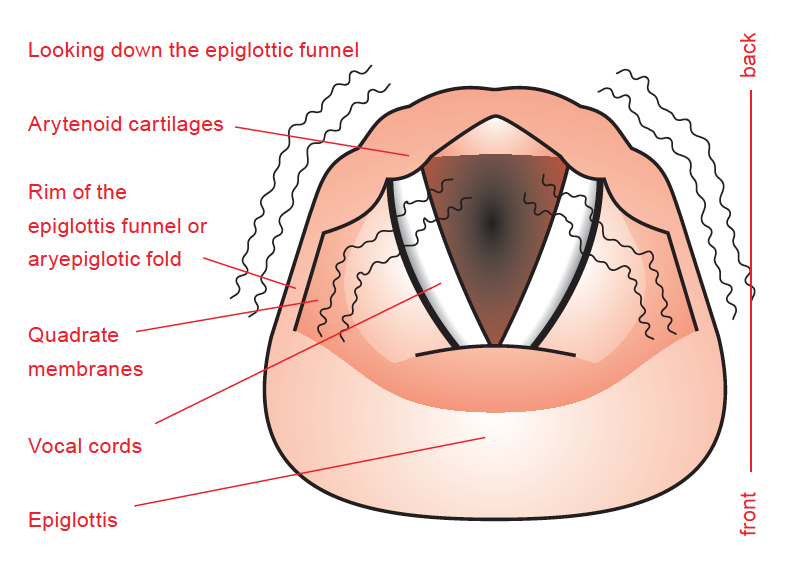An overview
Grunting has a dark, powerful sound, it is often low in pitch and has a very ‘demonic’ effect. There is a lot of ‘noise’ on this effect. It is an effect that can contain different expressions from despair to aggression. Grunt is often used in death metal and black metal. Grunt can sound like a combination of distortion and growl.
Grunt is produced in a combination of levels from 1-5. (see ’Various levels of the vocal tract’). Grunt is produced by making the whole larynx vibrate in an open position. The arytenoids, the aryepiglottic folds, the epiglottis and the very base of the vocal tract are vibrating, creating very low frequencies at a rather powerful volume. This effect is sometimes heard without a tone, when the vocal cords in held in an open position.
The sound is dark and hollow, and combined with the large shaped vocal tract (like a large funnel) the sound becomes even more hollow and booming. This sound is often used together with the microphone’s sphere 1, which adds bass boost and makes the sound even darker and more powerful.
Like all other effects, grunt must be produced with great accuracy to avoid misuse of the voice.

Singers who use or used grunt
Tom Waits, Angela Gossow (Arch Enemy), David Vincent (Morbid Angel), George “Corpsegrinder” Fisher (Cannibal Corpse), Jeffrey Walker (Carcass), singers from Napalm Death, John Tardy (Obituary), Anders Fridén (In Flames), Stian “Shagrath” Thoresen (Dimmu Borgir), Bjørn “Speed” Strid (Soilwork).
Grunt and pitch
Grunt may be used in all parts of the voice. However, it is mostly used in the low part of the voice.
Grunt and volume
The volume in grunt can vary from quiet (p) to very loud (ff). The air on the voice is removed as the volume increases.
Grunt and sound colours
The sound colour of grunt is often dark.
It is easier to add a dark sound colour to the Grunt in the low part of the voice.
Grunt in a song
| #270 (Female) #270 (Male) |
